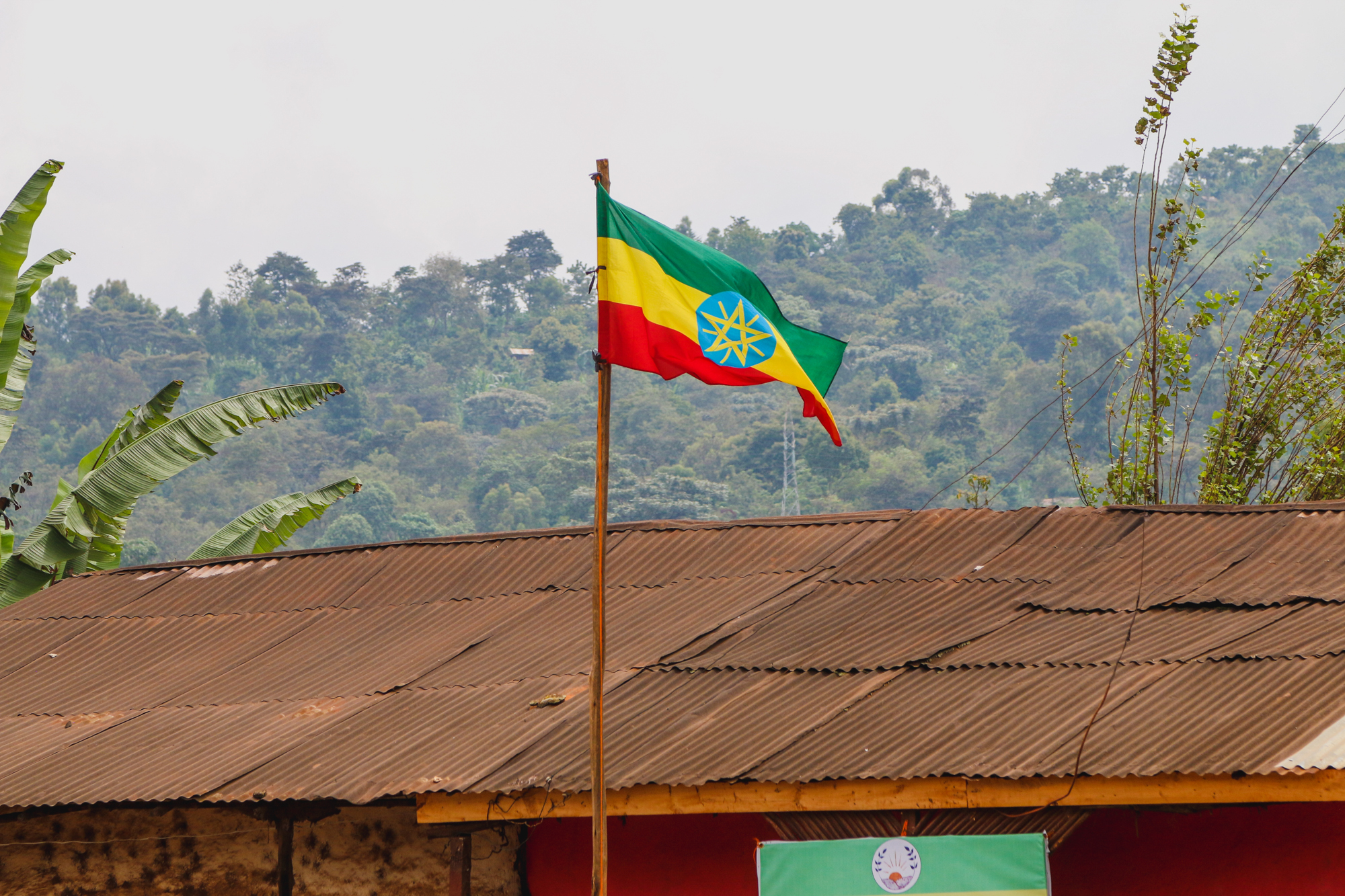
Right now, while we’re all staying home (hopefully) and most of the specialty-coffee industry has tucked away its passports for the time being (hopefully), we’re probably all dreaming of the places coffee has taken us—either on actual flights or flights of fancy. For us, Ethiopia is one of the first places we daydream about when we’re grounded from traveling, and of course it’s also the home to some of our very favorite coffees.

This year’s harvest-time visits to Ethiopia came right before travel restrictions began to be put in place in attempt to contain the spread of the novel coronavirus, and while we’re always excited to share news from the field and updates from our green-coffee buyers, it’s hard to know how exactly to tell the story of coffee right now. While we realize that many of us are on a kind of forced “pause” from many parts of our daily lives, we also know that many of our customers, friends, and partners find comfort in escaping into coffee—and so do we. We’re also still optimistic about getting timely shipments out of the country, even though these are unpredictable days.
So, fellow lovers of Ethiopian coffee, we offer you a somewhat abridged Harvest Report from the birthplace of Arabica coffee, and we hope that wherever you are while you’re reading it you’re imagining your first sip of this year’s fresh crop, which we’ll hopefully be sharing with you before too long.
Poetry in (Slower than Usual, Thanks to Rain) Motion
Claudia Bellinzoni, Cafe Imports’ green-coffee buyer for Ethiopia, has waxed somewhat poetic about the coffee-growing country in these reports before: “The land is so diverse and beautiful. Not just the landscape, but the vegetation, the plants—the soil itself seems to be so rich,” she’s said. “I think the coffee can only be good with a land like this, so many natural resources and soil that looks full of minerals.”
This year’s long trips to visit producers and export partners proved a bit difficult, however, and most of the poetry Claudia was able to report had more to do with the coffees themselves than with the process of sourcing them. (What can we say? Globe-trotting for coffee isn’t always glamorous and happy-go-lucky—especially this year.) Claudia spent most of January and part of February in Addis Ababa, primarily focused on cupping coffees and arranging contracts.

“It was a difficult year from the Ethiopian point of view because the harvest was delayed 2, 3 weeks,” she says. “The rains were a problem in general: It has been raining too much.” The irregular rain meant that for the first few weeks of the typical season, almost no one was delivering cherry—a complication that not only gums up predictions about annual supply, but also therefore has an impact on price. However, according to a representative from the Ethiopian Coffee and Tea Authority, the expected production this year is upward of 7.3 million metric tons—an increase of just more than 1% over last harvest—with exports topping 4 million 60-kilogram bags.


What’s in the Cup?
While harvest delays and increased quantities have caused a bit of confusion on the market, one thing that isn’t confusing is how good the coffees taste: This is where Claudia becomes her poetic self again. She spent several weeks evaluating offers from our export and producer partners in the regions of Limu, Guji, and, of course, famous Yirgacheffe, and as she recalls the flavors and aromas over the phone from her home in Italy (where she is sheltering in place, of course), she taps into the memory of those cups. “Ah, I miss cupping,” she says. “For me, each coffee is like a unique experience. It’s like painting: It’s difficult to have a number instead of just appreciating all of the nuances. But I started to enjoy that, to look at the painting through the mind and give it a number at the end.”
The numbers aren’t romantic, of course, but they can help: This year, she says, “Basically everything we are buying has a minimum of 87 points.” That includes some old-favorite washing-station lots from Yirgacheffe like those from Aricha and Edido; a fantastic selection of coffees from Tega & Tula Specialty Coffee Farm in Limu, Kaffa Province; and more fruit-forward farm-specific coffees from Kayon Mountain Farm in Shakiso, Guji.

But what will they taste like? She picks up her paintbrush: “In Limu when I cupped it was mainly super fruity, very intense cups in the Naturals: Very strong fruit, brown sugar, and floral everywhere. When we go to Tega & Tula, the notes are chocolate, bergamot, lemongrass and citrus, floral, cherry, even kiwi.”
“In Yirgacheffe, strong floral, caramel, brown sugar, lots of jasmine notes—more than last year, in my opinion.”
“Guji, Guji, Guji,” Claudia says with a wistful tone. “It’s more like cola and berries, berries everywhere. For me, Kayon Mountain is like strawberries. Chocolate, berries, florals, caramel—but the strawberry one is for me predominant.” The other coffees we source from Guji, she says, show more intense floral, burnt sugar, bergamot, jasmine, and chamomile. “I think this year there is much more floral than the previous.”
It’s a beautiful painting from a beautiful country, and we can’t wait to share the colors of it with you when they arrive this late spring/early Summer: We could all certainly use a little bit of red, pink, yellow and green to counteract some of the blue of the days lately, and we look forward to tasting the rainbow that Ethiopia has to offer, in a lighter, brighter time.
Stay in touch with your sales representative to find out about fresh-crop offerings and arrivals!